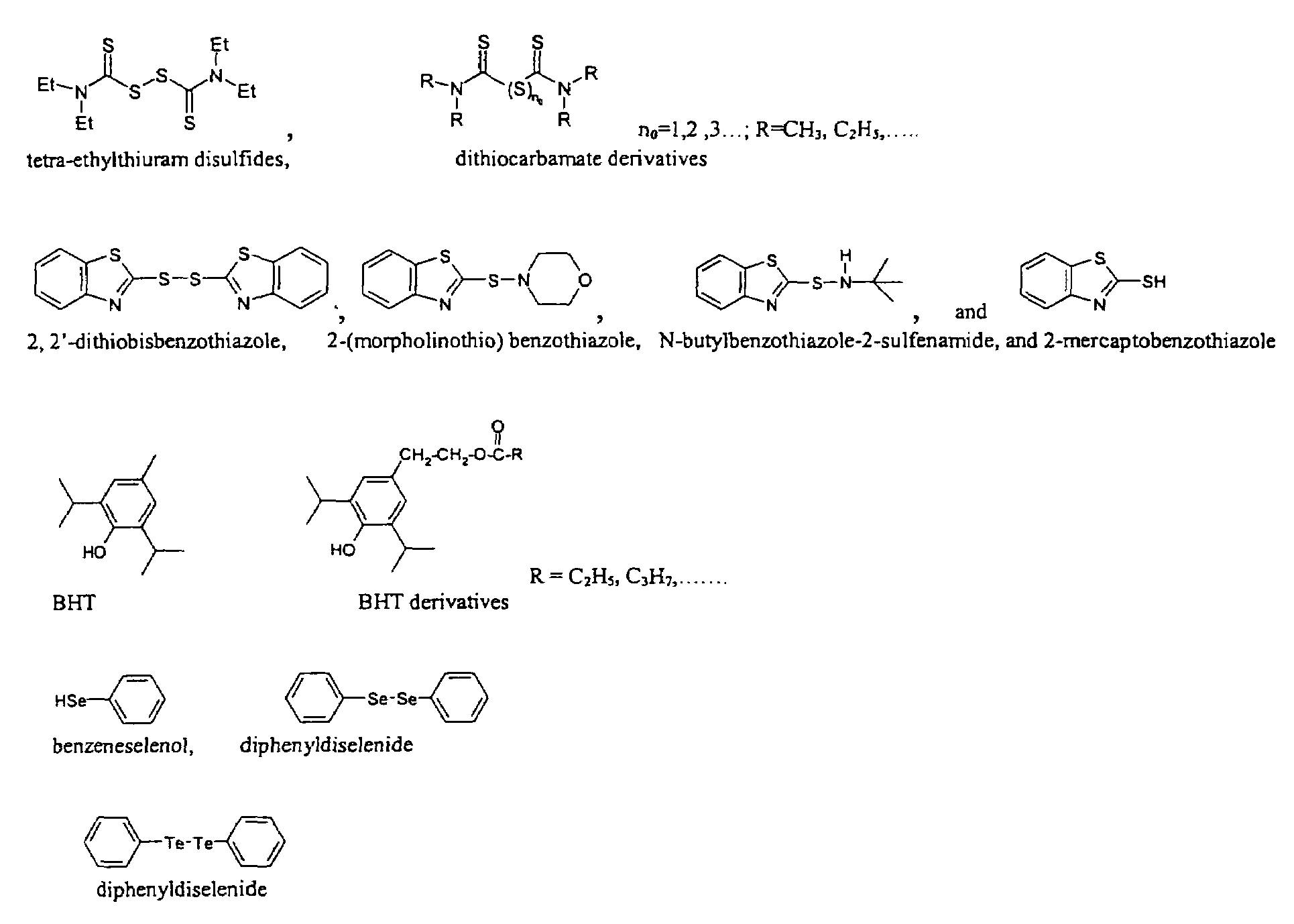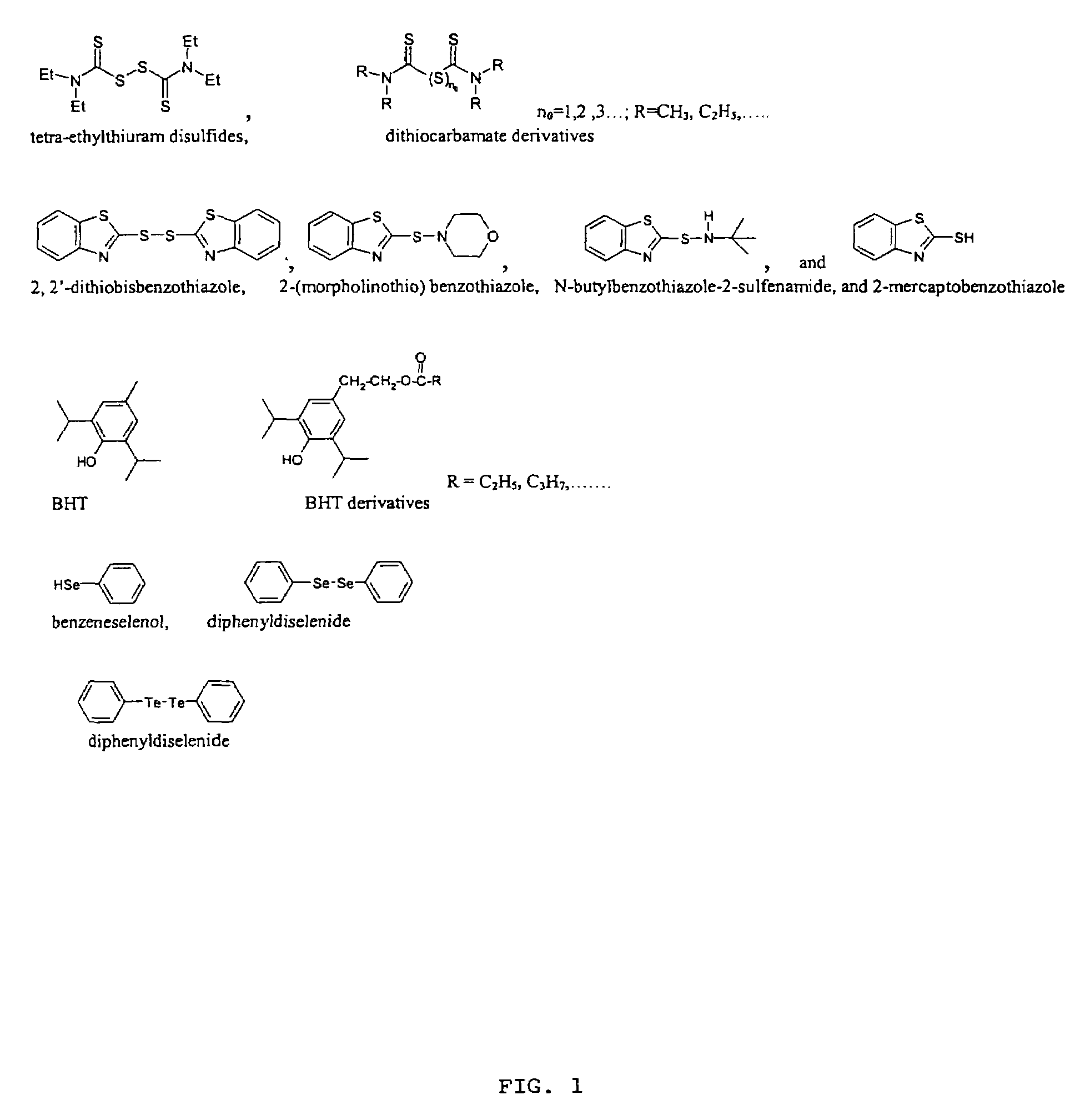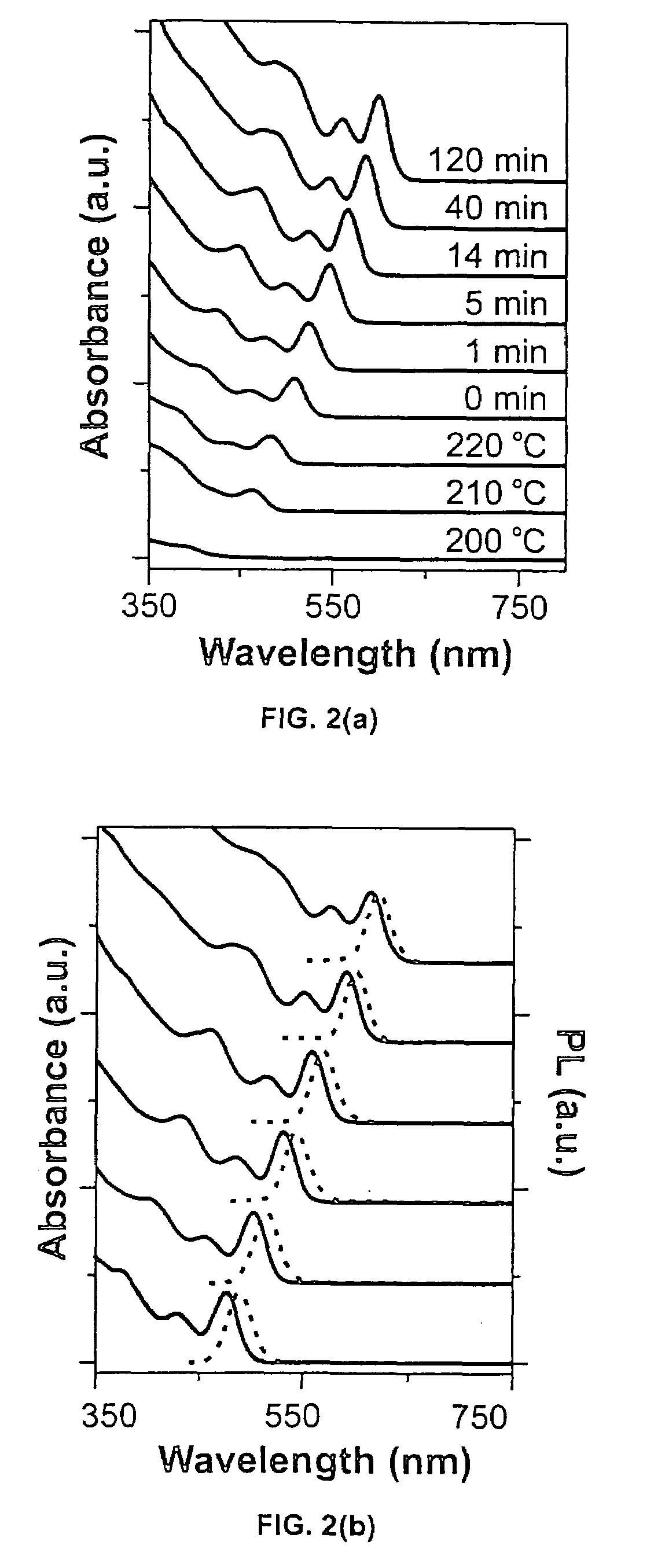One-pot synthesis of high-quality metal chalcogenide nanocrystals without precursor injection
a technology of metal chalcogenide nanocrystals and precursor injection, which is applied in the direction of crystal growth process, polycrystalline material growth, mercury compounds, etc., can solve the problems of reducing the merits of injection methods, and reducing the number of stable nuclei. , the effect of improving the growth rate of cds particles
- Summary
- Abstract
- Description
- Claims
- Application Information
AI Technical Summary
Benefits of technology
Problems solved by technology
Method used
Image
Examples
example 1
CdSe Nanocrystals Synthesis
[0060]In a standard nitrogen-protected glove box, 4.0 mg of selenium powder (0.05 mmol, 99.99%, 100 mesh) and 5.0 g 1-octadecene (ODE) were mixed in a 25 ml three-neck flask. The mixture solution was stored inside at room temperature for 24 hours. Then the flask was taken out of glove box and 56.7 mg of cadmium myristate (0.1 mmol) was further added. After that, the flask was connected to Schlenke line and the mixture solution was degassed for 10 min under vacuum (˜30 mTorr) at room temperature. Under an argon flow and with stirring, the solution was heated to 240° C. at a rate of 25° C. / min.
[0061]After the temperature reached 240° C., serial aliquots were taken for kinetic studies. The corresponding UV-Vis absorption spectra of aliquots / toluene solution were shown in FIG. 2(a). The measurements were performed on a Shimadzu UV-vis spectrometer (UV Probe 1701). No clusters were detected when the temperature was below 200° C. After the temperature reached 21...
example 2
CdSe Nanocrystals Syntheses with Additional Myristic Acid
[0064]In a standard nitrogen-protected glove box, 4.0 mg of selenium powder (0.05 mmol, 99.99%, 100 mesh) and 5.0 g 1-octadecene (ODE) were mixed in a 25 ml three-neck flask. The mixture solution was stored inside at room temperature for 24 hours. Then the flask was taken out of glove box and further added with 56.7 mg of cadmium myristate (0.1 mmol) and 0.284 g of myristic acid (0.1 mmol). Myristic acid is also known as tetradecanoic acid, having the chemical formula: CH3(CH2)12COOH. After that, the flask was connected to Schlenke line and the mixture solution was degassed for 10 min under vacuum (˜30 mTorr) at room temperature. Under an argon flow and with stirring, the solution was heated to 240° C. at a rate of 25° C. / min. After the temperature reached 240° C., serial aliquots were taken for kinetic studies. The corresponding UV-Vis absorption spectra of aliquots / toluene solution were shown in FIG. 5. Clearly, the exciton ...
example 3
CdTe Nanocrystal Synthesis
[0066]Cadmium oxide powder (0.1 mmol) and octadecylphosphonic acid (ODPA, 0.22 mmol) were mixed with 1-octadecene (ODE, 5.0 g, from Aldrich) in a 25 ml three-neck flask. The mixture solution was degassed for 10 min under vacuum (˜30 mTorr) at room temperature. Under argon flow, the solution was heated to 300° C. Within the first 40 min, the solution was not stirred, whereas it was stirred within the second 40 min. Brown CdO powder disappeared and a colorless solution was obtained. Then the system was degassed under vacuum at 150° C. for 10 min in order to remove any remaining water generated in the previous step. After that, the system was aged at room temperature for 2 hours. 0.282 ml TBPTe (tributylphosphine telluride, 0.2 mmol tellurium in 0.23 g of TBP-tributylphosphine) was mixed at room temperature with the Cd-ODPA (octadecylphosphonic acid, cadmium salt) complex produced as above described. After 5 min degassing, the mixture solution was heated to 24...
PUM
| Property | Measurement | Unit |
|---|---|---|
| temperature | aaaaa | aaaaa |
| particle diameter | aaaaa | aaaaa |
| temperature | aaaaa | aaaaa |
Abstract
Description
Claims
Application Information
 Login to View More
Login to View More - R&D
- Intellectual Property
- Life Sciences
- Materials
- Tech Scout
- Unparalleled Data Quality
- Higher Quality Content
- 60% Fewer Hallucinations
Browse by: Latest US Patents, China's latest patents, Technical Efficacy Thesaurus, Application Domain, Technology Topic, Popular Technical Reports.
© 2025 PatSnap. All rights reserved.Legal|Privacy policy|Modern Slavery Act Transparency Statement|Sitemap|About US| Contact US: help@patsnap.com



